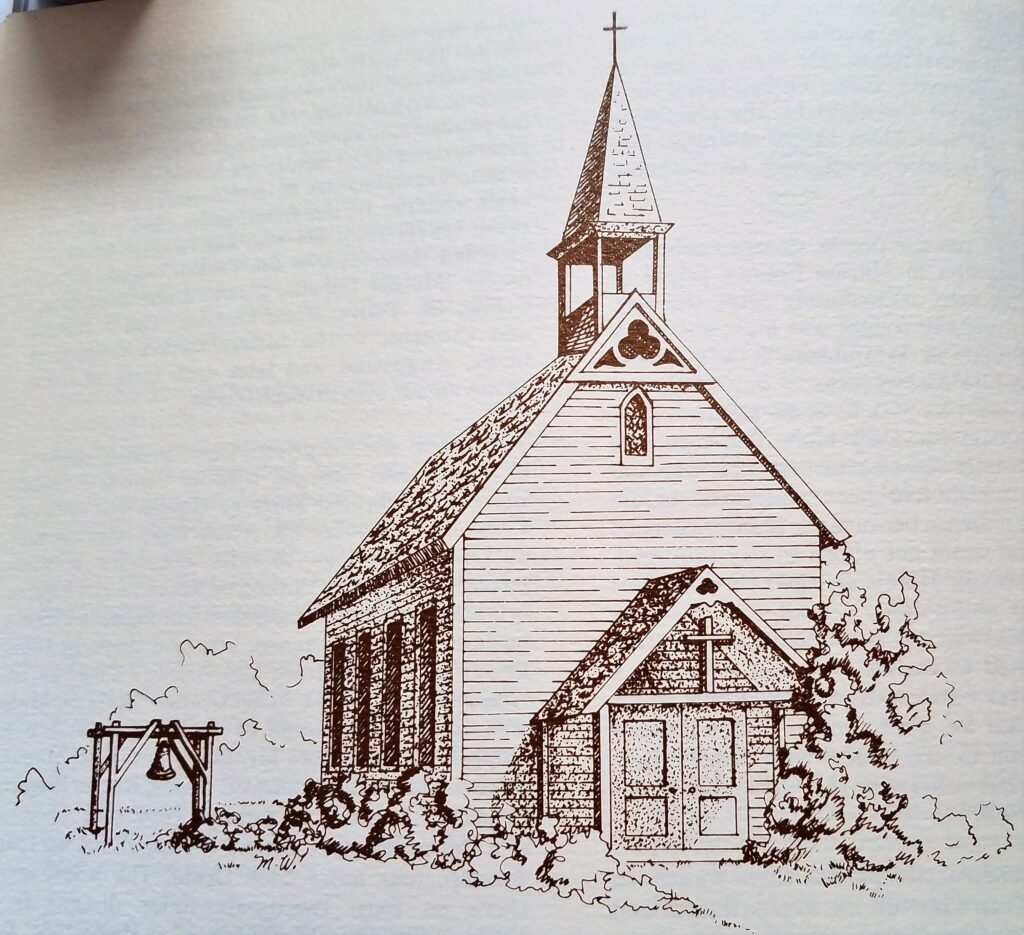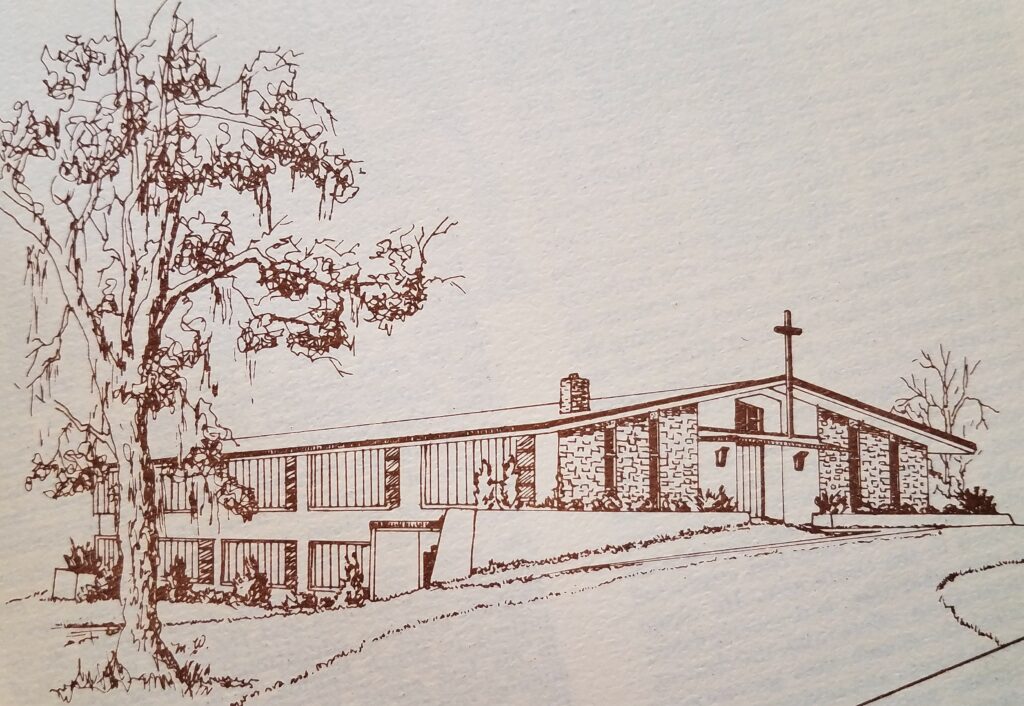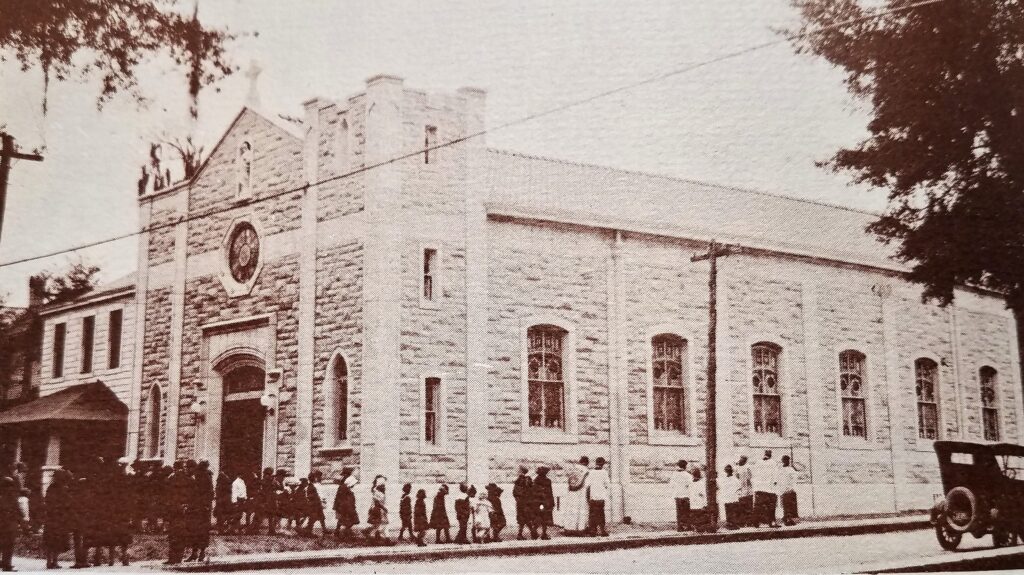Our History

Situated atop the highest point in Ocala, Blessed Trinity Catholic Church is a distinguishable and easily recognizable beacon of the Christian faith for our community. Its presence recalls Jesus’ observation at the end of the Beatitudes, “A city set on a mountain cannot be hidden.”
As Jane Quinn, a Blessed Trinity parishioner who in 1978 wrote a book about the history of our parish, the first effort to locate a Catholic parish in Marion County began in 1882. The church, a simple clapboard, A-frame structure, was completed and dedicated in 1883 as St. Philip Neri Catholic Church. It was located at the corner of what was then Magnolia and Monroe streets, a few blocks east of the present-day courthouse. The church did not, however, have a resident priest.
In 1892 St. Philip Neri was elevated from simply a mission to a parish. Fr. Bernard O’Reilly became its first permanent pastor.
By 1910 the parish had outgrown the church, and a search for a new site was launched. The church acquired property around town for the new facility. The parish eventually settled on a site at Oklawaha Avenue and Tuscawilla Street. It opened in January 1922, rechristened as Blessed Trinity. Trinity Academy, the church’s school and the community’s first private school, opened in 1928. But it sat almost a mile from the parish on Fort King Street.
In the mid 1950s, the parish began considering a way to combine the school and the church. After acquiring 18 acres slated to be a subdivision that proved to be unfit for residential development, the church found its current home, a clay hill on Southeast 17th Street. Construction plans announced in 1959 included the church and rectory, the school with a cafetorium and a convent for the sisters.


Just 12 years later, though, the church saw a need for additional growth, discussing whether to build a new church or a new parish hall. The parish voted in favor of a new church. The new church was dedicated in April 1974 and still serves the current community.
Plotting the movement of the physical church since 1883 is one way to show how it has changed. But there are other metrics.
For example, Quinn noted that around the turn of the 20th century, nearly two decades after St. Philip Neri was built, it served a Catholic population in Ocala that numbered about 75 people. Thirty years later the original Blessed Trinity was constructed with a capacity of 350. The current church can seat close to 1,000 attendees of seven weekend masses.
Additionally, when St. Philip Neri achieved parish status in 1892, the parish was defined as Marion, Levy and part of Alachua counties. Several spokes sprang from that hub, beginning in 1913 with St. John the Baptist Catholic Church in Dunnellon. Marion County now contains seven Catholic parishes besides Blessed Trinity, with missions in Citra and Silver Springs and a Hispanic mission in western Ocala.
Finally, it took 45 years from St. Philip Neri’s humble beginning for the parish to have an external ministry visible to the community: Trinity Academy. Today, the parish hosts at least eight ministries with public outreach, including a day care and two schools; services for the homeless, the elderly, and the imprisoned; a home for teenage mothers; and a community summer camp for schoolchildren. Moreover, Blessed Trinity’s reach stretches halfway around the world, with a sister parish and school in Uganda.
“The people of Blessed Trinity have been greatly blessed by God and the parish continues to grow,” Jane Quinn wrote at the end of her book. “The struggles of our Catholic ancestors in Marion County have helped us realize that each age must do its part, must take its place in history, must be good stewards of the physical, material, and spiritual blessings God has given us.”
Today Blessed Trinity Catholic Church, as that hilltop “city” of faith, continues to demonstrate its commitment to stewardship.
